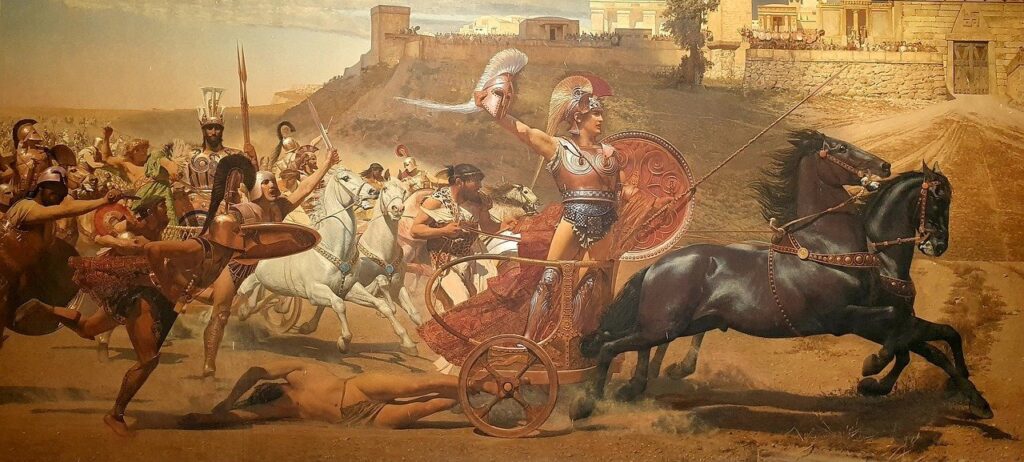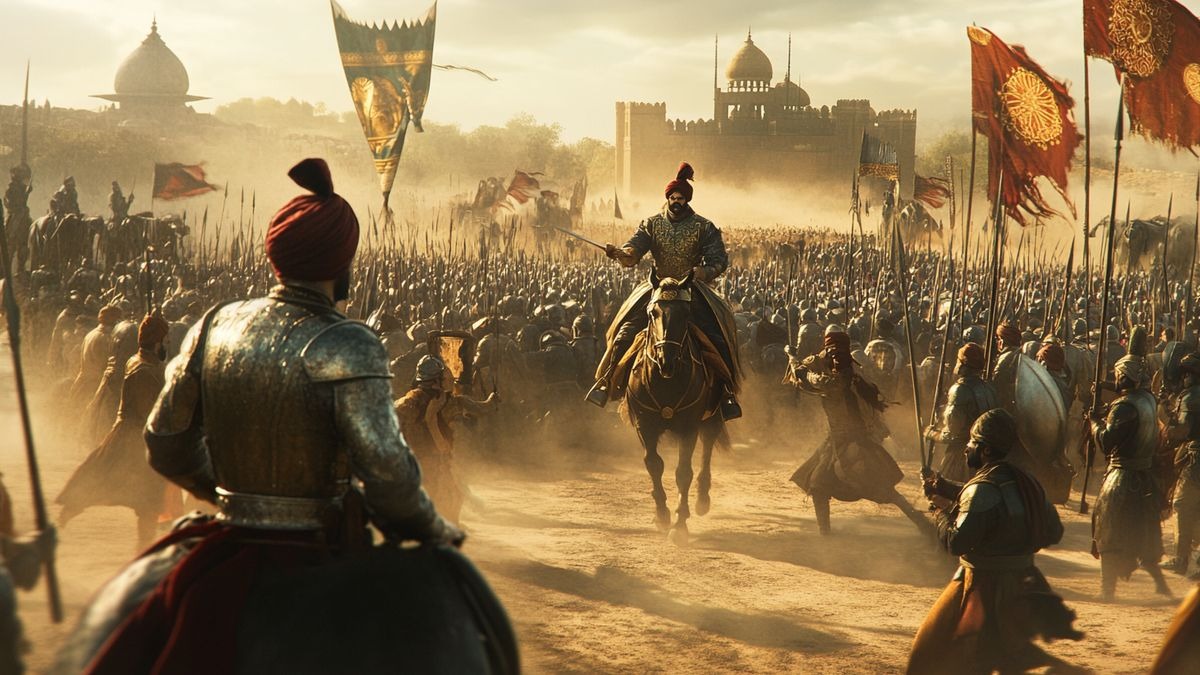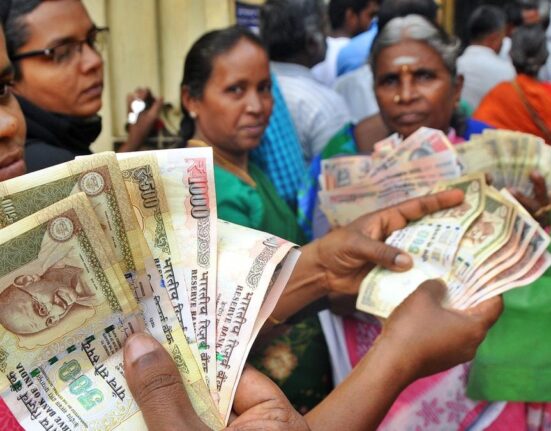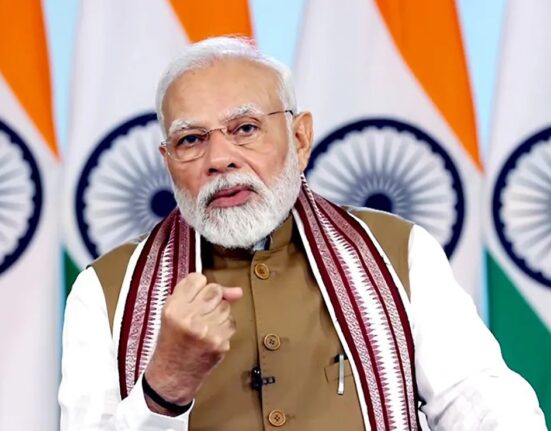परिचय
The First Battle of Panipat, fought on 21 April 1526 near the small village of Panipat (in present-day Haryana), marks a watershed moment in Indian history. This decisive clash between Babur, the founder of the Mughal Empire, and Ibrahim Lodi, the last Sultan of the Delhi Sultanate, not only ended Afghan-Lodi rule in North India but also laid the foundation for over three centuries of Mughal dominance. The battle’s outcome owed much to the innovative use of gunpowder, advanced field artillery, and new tactical warfare, fundamentally altering the political and military landscape of the subcontinent.

Background and Causes
By the early 16th century, North India was deeply fragmented under the ailing Delhi Sultanate, then ruled by the Lodi dynasty. Ibrahim Lodi’s autocratic rule led to widespread disaffection among nobles and governors, some of whom (including Daulat Khan Lodi, Governor of Punjab) even invited Babur to intervene. Babur, a descendent of Timur and Genghis Khan and ruler of Kabul, sought to fulfill his imperial ambitions in India, following the legacy of Timurid conquests and inspired by the region’s wealth and instability.
The emerging opportunity led Babur to cross the Indus in late 1525 with a small but seasoned army, quickly securing Punjab before marching toward Delhi—where Lodi prepared to face him at Panipat.
Opposing Armies
- Babur’s Army: Approx. 15,000 soldiers and 20–24 field cannons—smaller in number but highly disciplined, battle-tested, and technologically advanced.
- Ibrahim Lodi’s Army: Estimated 30,000–40,000 soldiers (excluding non-combatants) and over 1,000 war elephants—significantly larger but less coordinated and lacking gunpowder weapons.
Battle Strategies and Innovations
Babur’s Tactics
Babur’s victory at Panipat is most celebrated for its pioneering tactical brilliance, notably:
- Tulughma: The division of his army into flanking (left and right) and central units, further split into forward and rear divisions. This formation aimed to surround and attack the enemy from multiple sides, leveraging mobility and flexibility uncommon in Indian warfare.
- Araba/Ottoman Device: In the center, Babur deployed 700 bullock carts tied together by rawhide ropes, forming a barricade. Matchlock men (musketeers) and cannons were placed between the carts, protected by mantelets (mobile shields). This “cart-anchored” line allowed Babur’s artillery to fire safely while still maneuvering effectively.
- Defensive Positioning: Babur placed his right flank along Panipat’s walls and dug trenches on his left, forcing Lodi’s army to engage through a narrow battlefield, neutralizing their numerical and cavalry advantages.
The Course of the Battle
- The battle began at dawn and ended before noon. Lodi’s war elephants, unnerved by the thunderous cannon fire, trampled their own ranks, causing chaos and confusion among his troops.
- Babur’s artillery and flexible formations attacked Lodi’s flanks, gradually encircling his forces. The disciplined Mughal cavalry and infantry exploited gaps, while the relentless gunfire devastated the less-cohesive Lodi formations.
- Ibrahim Lodi fought bravely but was killed on the battlefield, along with much of his command, as his army disintegrated under pressure. Contemporary accounts note that more than 20,000 of Lodi’s soldiers perished, with Mughal casualties largely unrecorded.
Aftermath: Foundation of the Mughal Empire
Babur’s triumph at Panipat had epochal consequences:
- The Lodi dynasty and the Delhi Sultanate collapsed. Delhi and Agra both fell to Babur, who was proclaimed ruler of “Hindustan”.
- The Mughal Empire was formally founded, blending Mongol, Turkic, and Persian political traditions and introducing new administrative structures and military technology to India.
- Babur’s victory ushered in gunpowder warfare—firearms and cannon would become staples of Indian battlefields, transforming military strategy across the subcontinent.
- Babur did not rest on his laurels; he faced fresh threats and quickly had to consolidate his dominion, including another major victory at the Battle of Khanwa in 1527, which secured Mughal rule against Rajput resistance.
Broader Historical Significance
- Location: Panipat’s flat terrain, close to the Grand Trunk Road, made it a historic battleground for control over North India. The region would witness two more epochal battles (1556 and 1761) for similar reasons.
- Cultural and Administrative Legacy: Mughal rule deeply influenced Indian society—architecture, art, gardens, language, and administrative innovations all owe much to the dynasty Babur founded in 1526.
- Societal Impact: The victory ended Afghan dominance in North India, introduced foreign military techniques, and laid the social and political foundations for the Indian “early modern” era.

Interesting Facts
- Babur’s army was outnumbered at least two to one, making his victory a classic case of tactical genius over brute strength.
- The battle introduced gunpowder and artillery as decisive factors in Indian warfare.
- Babur recorded his campaigns in his autobiographical work, the Baburnama, which provides a rare first-person account of 16th-century Indian warfare and politics.
निष्कर्ष
The First Battle of Panipat (1526 CE) was one of the most transformative events in Indian history. Babur’s combination of tactical innovation, strategic leadership, and advanced weaponry allowed a small Central Asian army to overturn centuries-old power structures, leading to the birth of the Mughal Empire—a dynasty that would shape South Asia for generations.








इस बारे में प्रतिक्रिया दें